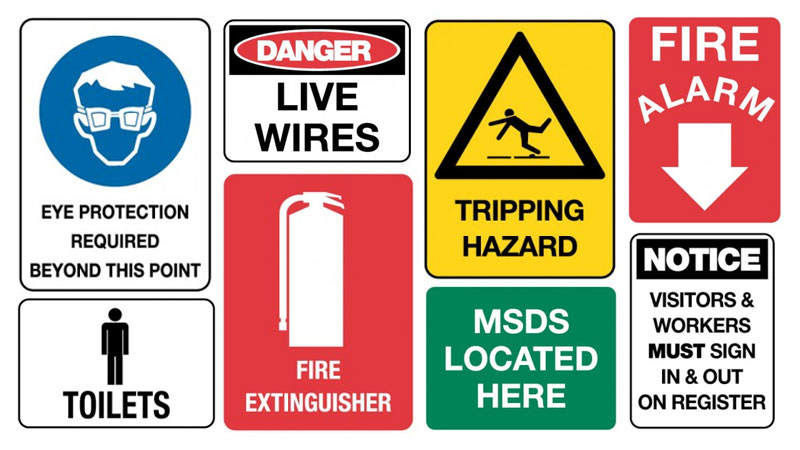Color Codes for Workplace Signs


Visual Communication in the workplace is standardized by signs and color codes. OSHA and ANSI have identified safety colors for consistency in the United States. ANSI outlines 10 safety colors with specific applications for each in the ANSI Z535 safety sign standards guide and OSHA outlines two broad requirements for safety colors in its Standard for Safety Color Codes, 29 CFR 1910.144.
Red is used for fire-related hazards, emergency switches, bars and buttons on hazardous machines. Fire-related hazards includes the identification of fire protection equipment and containers of flammable liquids.
Yellow should indicate caution using it for signs of physical hazard, including striking against, falling, tripping or getting caught in between.
The ANSI standard dictates every aspect of design of work signs that not only includes color but signal words such as “danger”.
Universally recognized for identifying the most serious hazards, red signifies “danger” and is meant for fire hazards, fire equipment, danger signs, emergency stop switches, flammable containers and liquid, confined spaces and construction hazards.
Orange identifies machines that can crush, cut, shock or injure workers. Overall risk is less serious that a red danger. Scenarios may include exposed moving machine parts, low clearances, electrical shock hazards, fast paced work zone and road construction.
ANSI recognizes yellow much like OSHA. Yellow communicates possible hazards that may lead to worker injury. These signs warn against unsafe practices. Possible situations include instruction to wear protective gear, avoid wet floors, only authorized personnel entry, mark edges of platforms or docks and overhead or moving equipment use.
ANSI reserves green for general safety signs that point out location of first aid kits, eye washes, medical equipment, offer general sanitation guidelines and/or suggest best practices in a work area.
Blue signs are generally used for unrelated information to visitors. Blue may also be used for designated areas, reminders, communication of instruction and rules for maintenance.
Brown is reserved for combustible fluids and gases.
Purple, gray, black and white are colors reserved for the end user to designate.